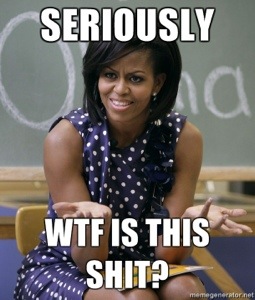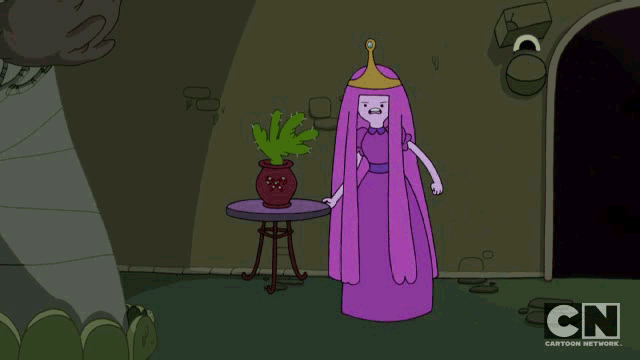Let me do the TL;DR up front – it’s the same as the old stance.
Several new stories have come out today about a recent interview Pope Francis did where he expanded on his comments from July on homosexuality and women’s roles in the church. I’ll link to some articles about what he had to say in a moment, but first I want to say this – my issue with what he’s saying is the same as it has been since July – it’s all PR and no substantive change. The articles note specifically that “The pope’s comments don’t break with Catholic doctrine or policy, but instead show a shift in approach, moving from censure to engagement” and that “The catechism, the Catholic Church’s book of official doctrine, condemns homosexual acts, but says gays and lesbians ‘must be accepted with respect, compassion, and sensitivity.'”
That is not real change. Not at all. For gay people, we need concrete, specifics, and here’s why:
Here’s the story, for the first time I’ve ever told it in any explicit detail, on why I quit attending the Catholic Church just after college, way back in the dark ages, back in 1992. At that time, I went directly to the priest that was in charge of my mother’s church and asked him straight out what the church’s policy on gay people was. I had begun “coming out” in 1987, and in the years after that I fought with my mom tooth and nail over going to church. In July of 1992, this specific paper was released by John Paul II on gay people and the Catholic church [Some Considerations Concerning The Response To Legislative Proposals On The Non-Discrimination Of Homosexual Persons] and it was discussed in some of the gay newspapers at the time. I looked it up at the library, made a copy of it, and took it to the priest of my mom’s church Our Lady of Grace in Noblesville, Indiana. This specifically bothered me:
1. The letter recalls that the CDF’s “Declaration on Certain Questions Concerning Sexual Ethics” of 1975 “took note of the distinction commonly drawn between the homosexual condition or tendency and individual homosexual actions”; the latter are “intrinsically disordered” and “in no case to be approved of” (No. 3).
2. Since “[i]n the discussion which followed the publication of the (aforementioned) declaration …, an overly benign interpretation was given to the homosexual condition itself, some going so far as to call it “neutral or even good,” the letter goes on to clarify: “Although the particular inclination of the homosexual person is not a sin, it is a more or less strong tendency ordered toward an intrinsic moral evil; and thus the inclination itself must be seen as an objective disorder. Therefore special concern and pastoral attention should be directed toward those who have this condition, lest they be led to believe that the living out of this orientation in homosexual activity is a morally acceptable option. It is not” (No. 3).
I told the priest that I was gay, that I intended to fall in love with and marry a woman someday. I wanted to know, specifically, what that meant in relation to the church.
The priest told me, straight up: “You will not be welcome in the church if you maintain a sinful lifestyle without any remorse or desire to change your behavior. We expect you to not engage in sexual behavior with women, to confess to your sins in confession, do penance for them, and to be celibate before you would be allowed to take communion. If you don’t, you will be able to attend mass with your family on holidays, but you won’t be allowed to take communion. If you regularly attend church without going to confession or renouncing your sinful behavior, we wouldn’t continue to welcome you in the church on a weekly basis, and we would ask you to stop attending.”
That told me everything I needed to know about where I stood with the Catholic Church, and other than attending on holidays with my family for the sake of family harmony, I haven’t been back.
This is still the Catholic Church’s position.
Nothing in the interviews Francis has given in July or now changes what I was told by my priest back in 1992. What Francis is saying is basically “Don’t ask, don’t tell.” They aren’t going to inquire what I’m doing with my wife under the covers, but it’s still considered a sin. My wife and I still aren’t considered a family to them, and if we were a part of the church, they would expect us to keep our relationship on the downlow. I imagine if I went to confession and told them that I regularly have sex with my wife, they would be forced to confront the issue somehow, and what would come out of it would be exactly what I was told back in 1992, more or less. They might not tell me never to come back, but they would still think my romantic relationship with my wife is a sin.
CNN’s coverage of the interview:
Pope Francis said the church has the right to express its opinions but not to “interfere spiritually” in the lives of gays and lesbians, expanding on explosive comments he made in July about not judging homosexuals.
In a wide-ranging interview published Thursday, the pope also said that women must play a key role in church decisions and brushed off critics who say he should be more vocal about fighting abortion and gay marriage.
Moreover, if the church fails to find a “new balance” between its spiritual and political missions, the pope warned, its moral foundation will “fall like a house of cards.”
And a summary of his remarks from the New York Times:
Pope Francis, in the first extensive interview of his six-month-old papacy, said that the Roman Catholic Church had grown “obsessed” with preaching about abortion, gay marriage and contraception, and that he has chosen not to speak of those issues despite recriminations from some critics.
In remarkably blunt language, Francis sought to set a new tone for the church, saying it should be a “home for all” and not a “small chapel” focused on doctrine, orthodoxy and a limited agenda of moral teachings.
“It is not necessary to talk about these issues all the time,” the pope told the Rev. Antonio Spadaro, a fellow Jesuit and editor in chief of La Civiltà Cattolica, the Italian Jesuit journal whose content is routinely approved by the Vatican. “The dogmatic and moral teachings of the church are not all equivalent. The church’s pastoral ministry cannot be obsessed with the transmission of a disjointed multitude of doctrines to be imposed insistently.
“We have to find a new balance,” the pope continued, “otherwise even the moral edifice of the church is likely to fall like a house of cards, losing the freshness and fragrance of the Gospel.”

As I was going over this post, I did a bit of looking through things I’ve written or noted here on this blog about the Catholic Church and the crazy, offensive and hostile things they’ve done over the years. Here’s a short list of bullshit the Catholic Church has been up to in the time I’ve been keeping this blog… Interesting how much Pope Francis’s new statements resemble that link that I posted in November of 2006.
- Mar 30, 2010 – Link to Matt Taibi article: The Catholic Church is a Criminal Enterprise
On the church’s denial of culpability on sexual abuse charges.
- Apr 2, 2007 – Catholic Archbishop Doesn’t Know Difference Between Sex and Rape
- Nov 17, 2006 – The Catholic Church Has a New Policy on Gay People
- Aug 29, 2005 – Catholic Church moves to ban gay priests
- May 25, 2005 – Catholics refuse communion to people who support gays
- Mar 28, 2005 – Michigan Preparing To Let Doctors Refuse To Treat Gays
This was a movement led by the Catholic Church in Michigan
- Dec 30, 2003 – Pope speaks out against equal marriage rights for gay people
- Aug 4, 2003 – The Magdalene Sisters Documentary
- Jan 27, 2003 – The Magdalene Laundries and the Catholic Church
- Jan 9, 2003 – Catholic Priests Abused Women, Too







